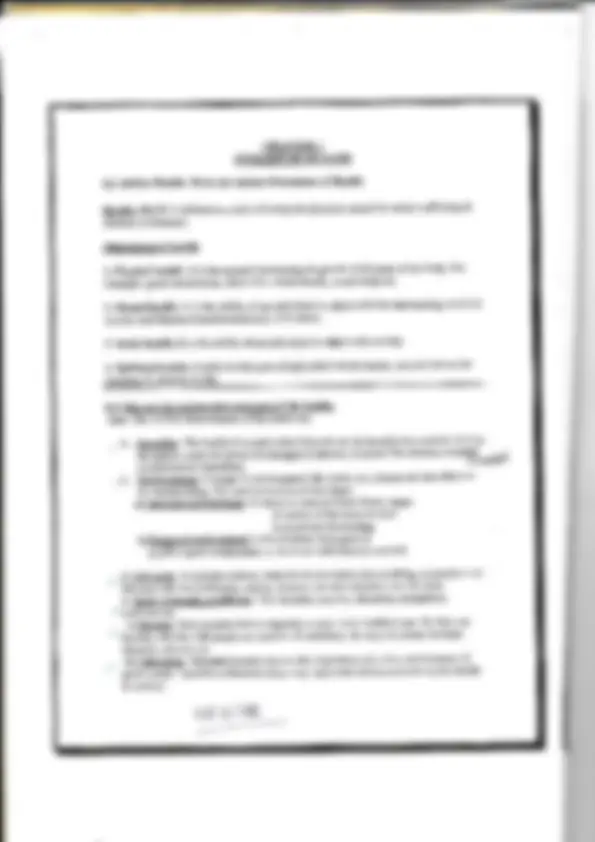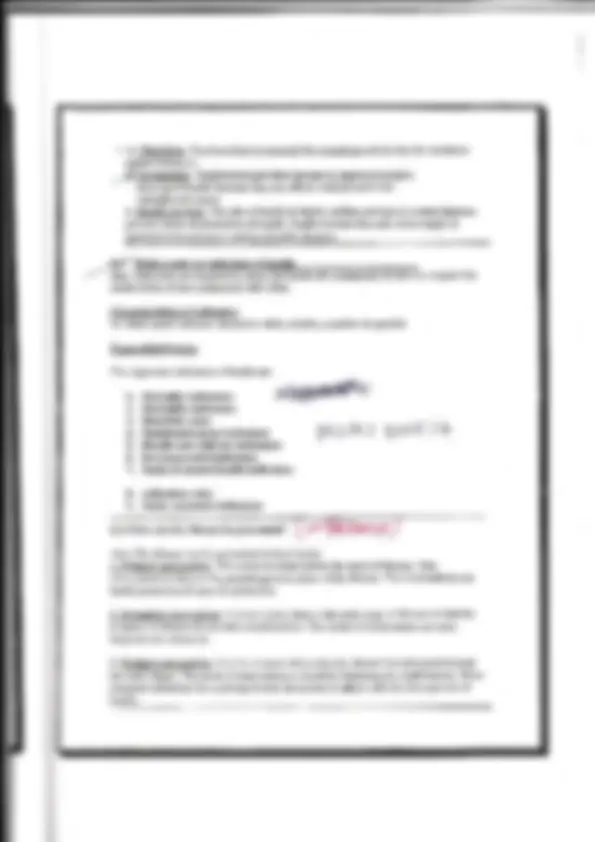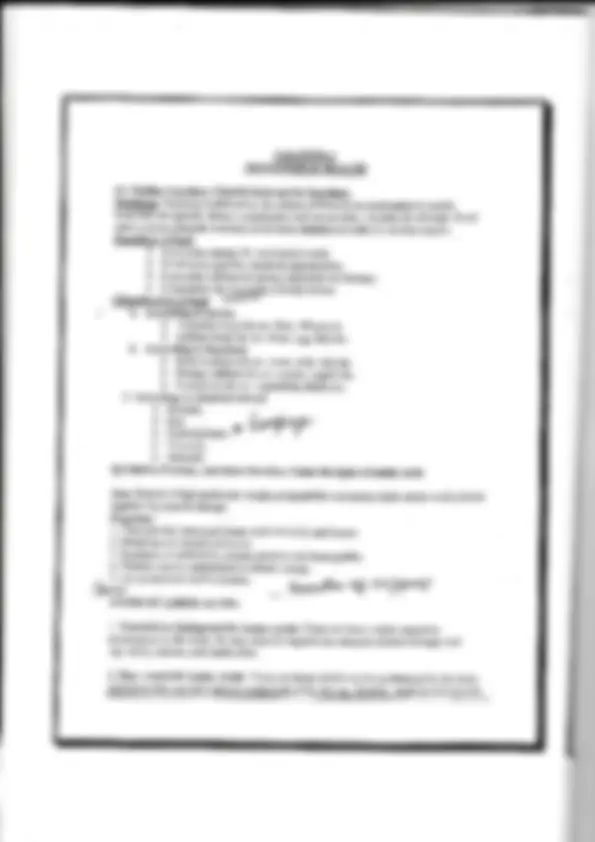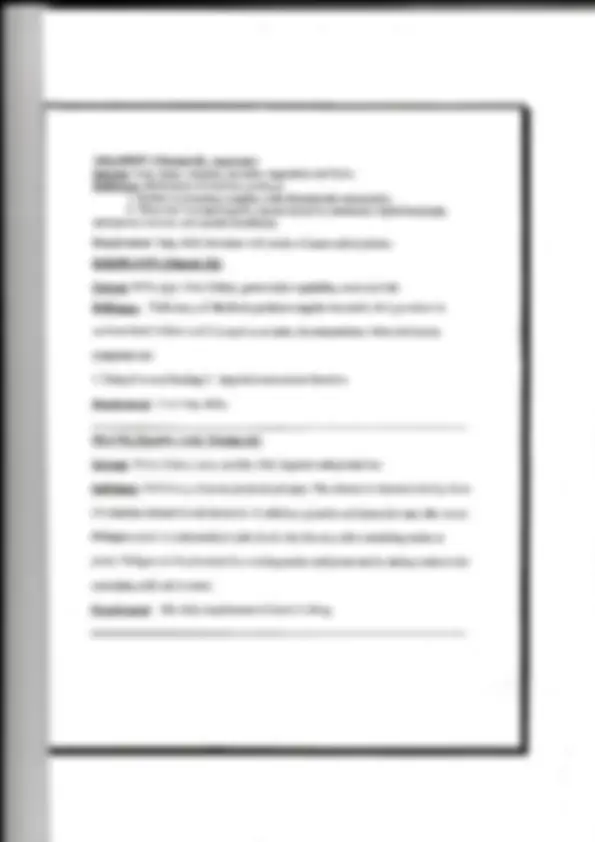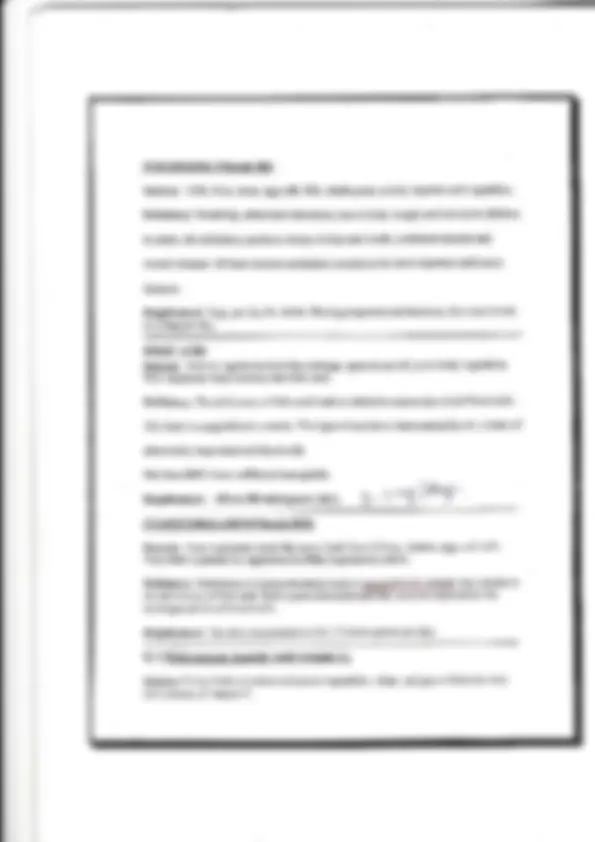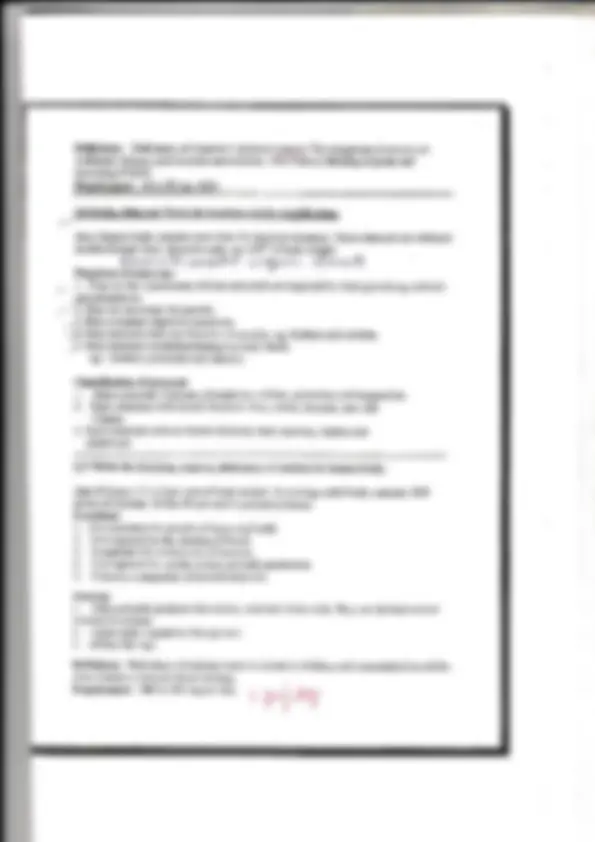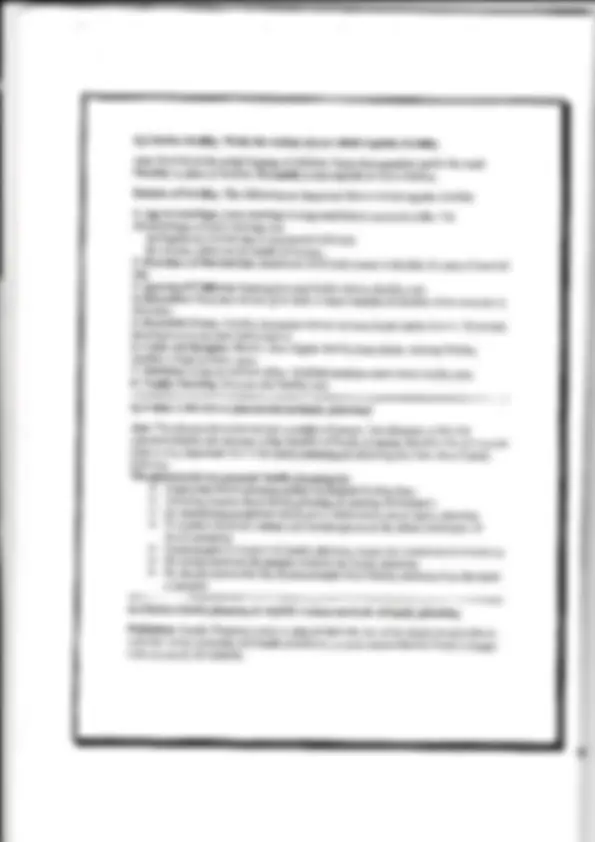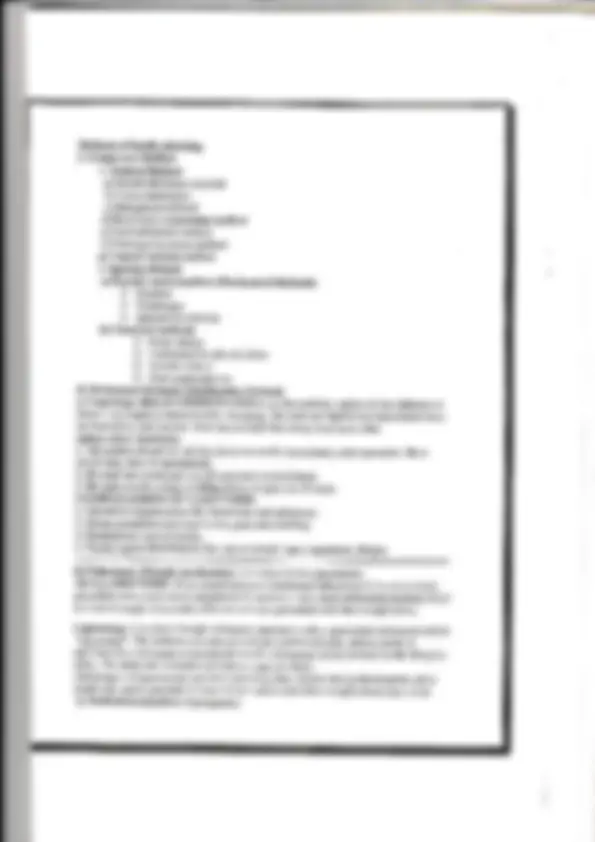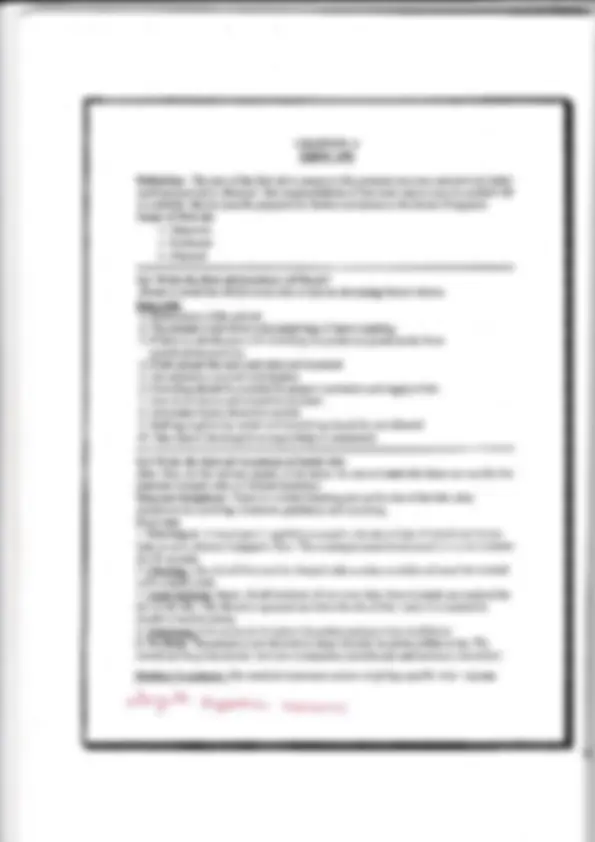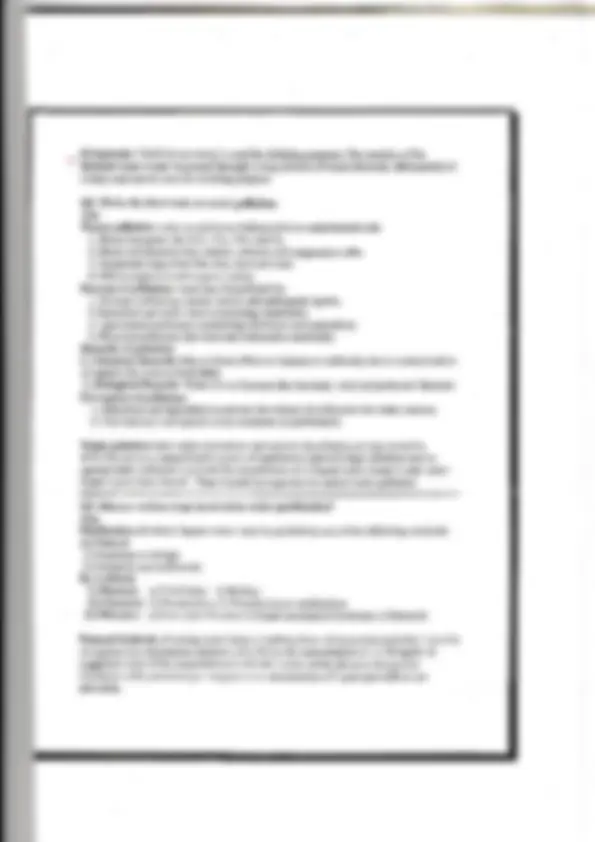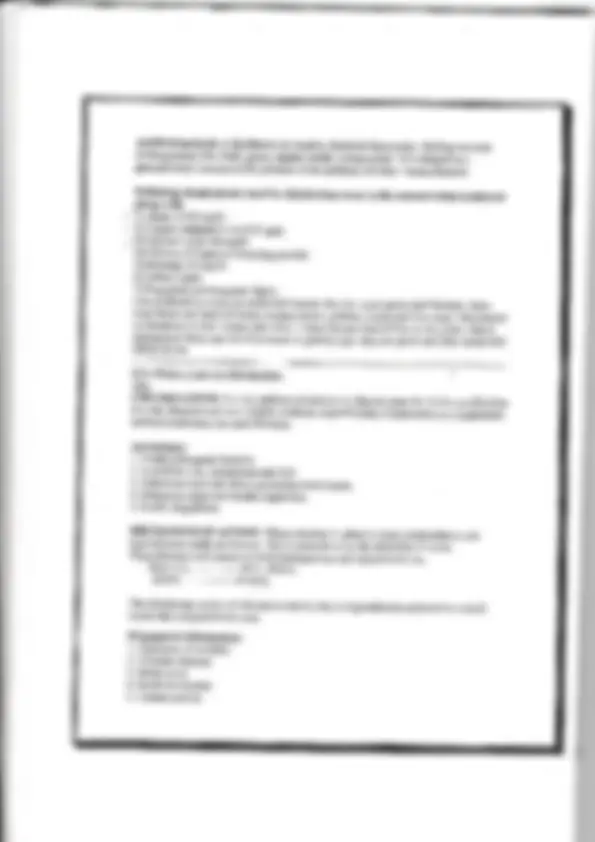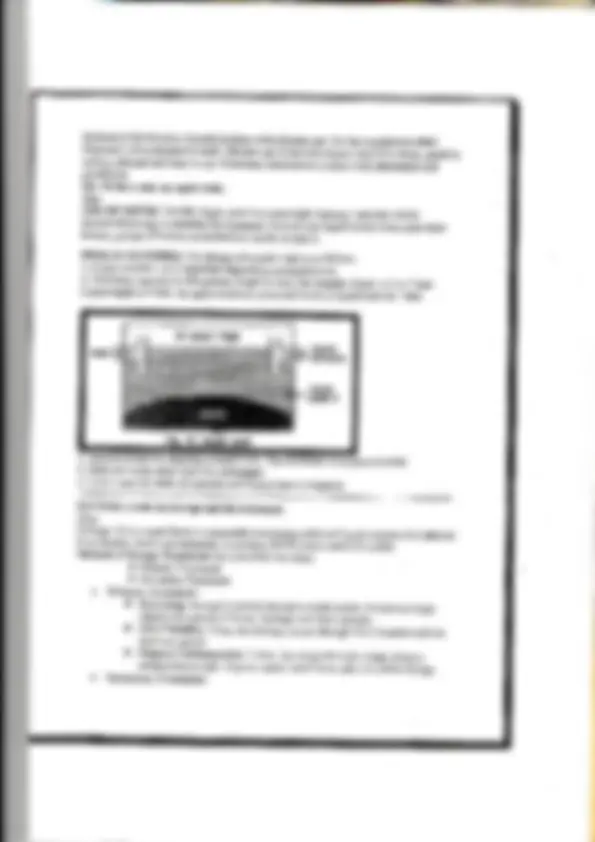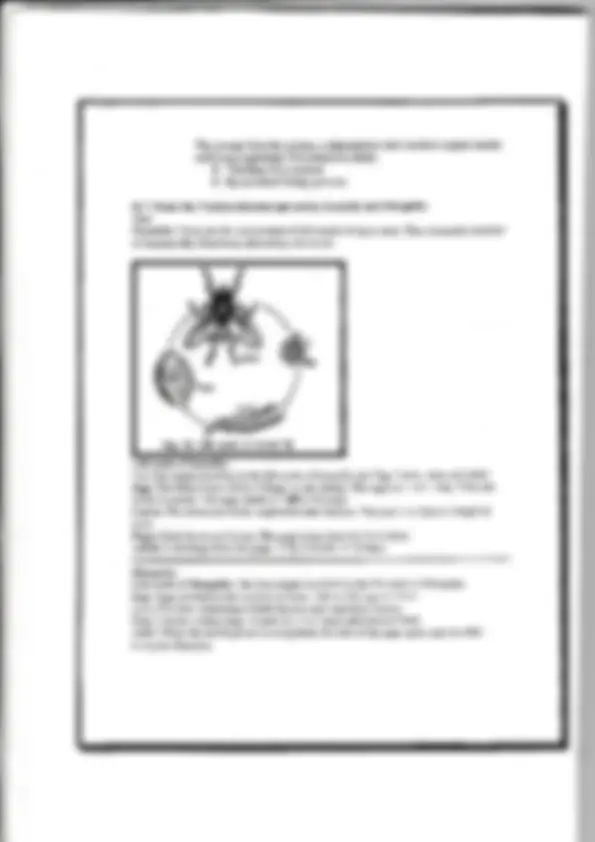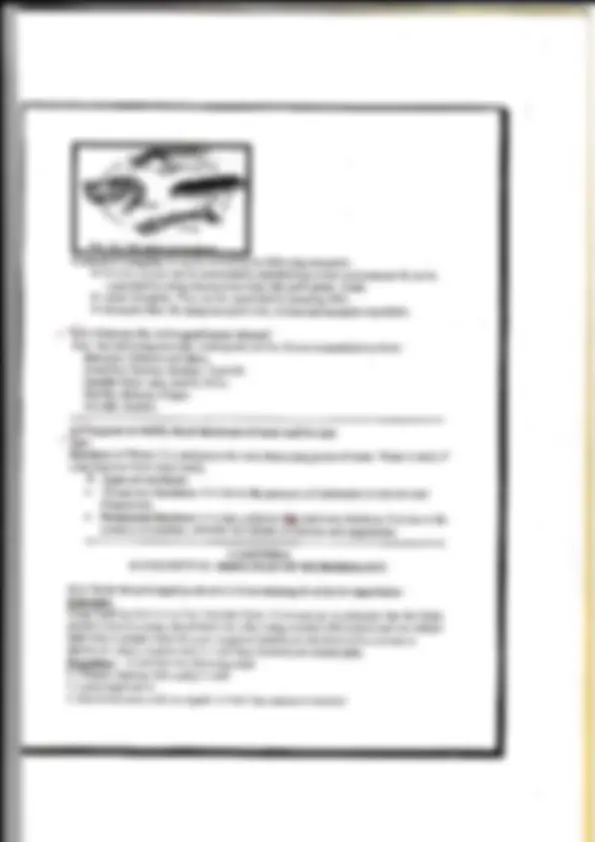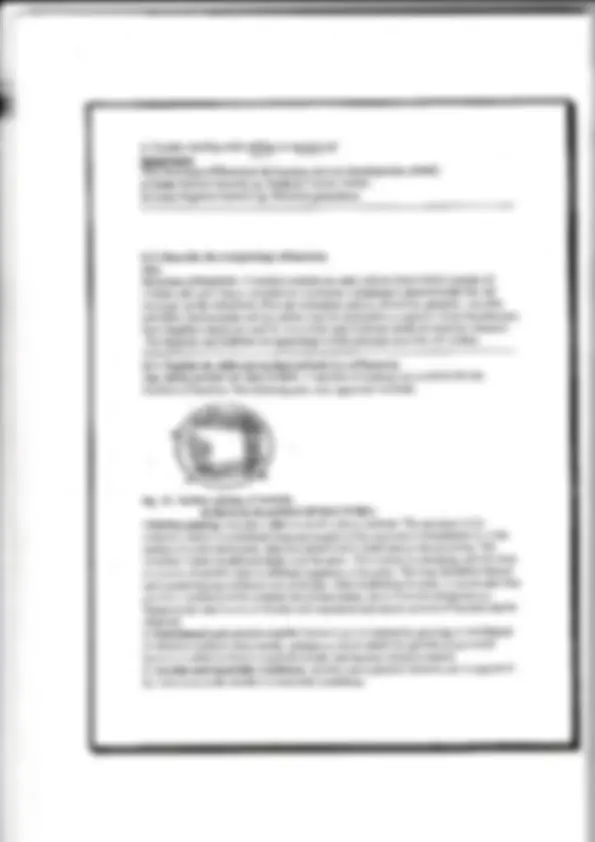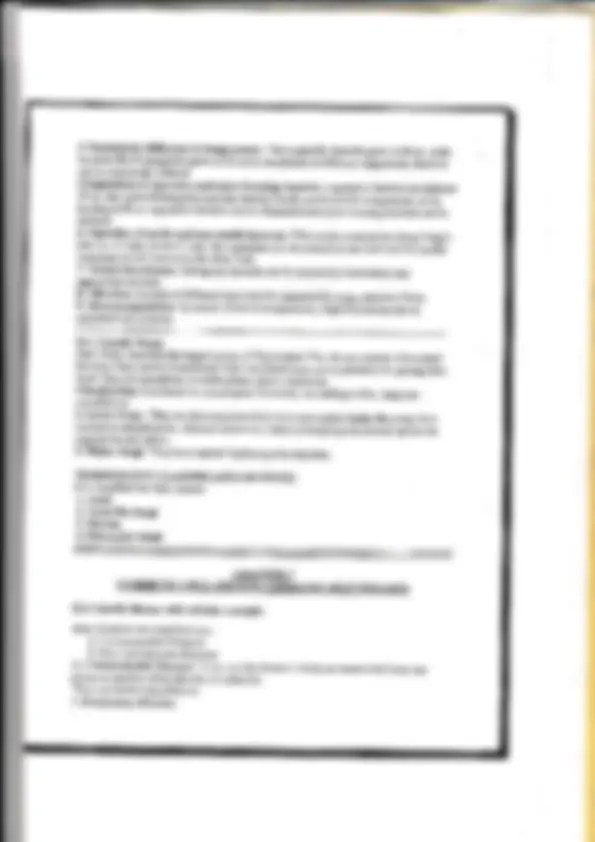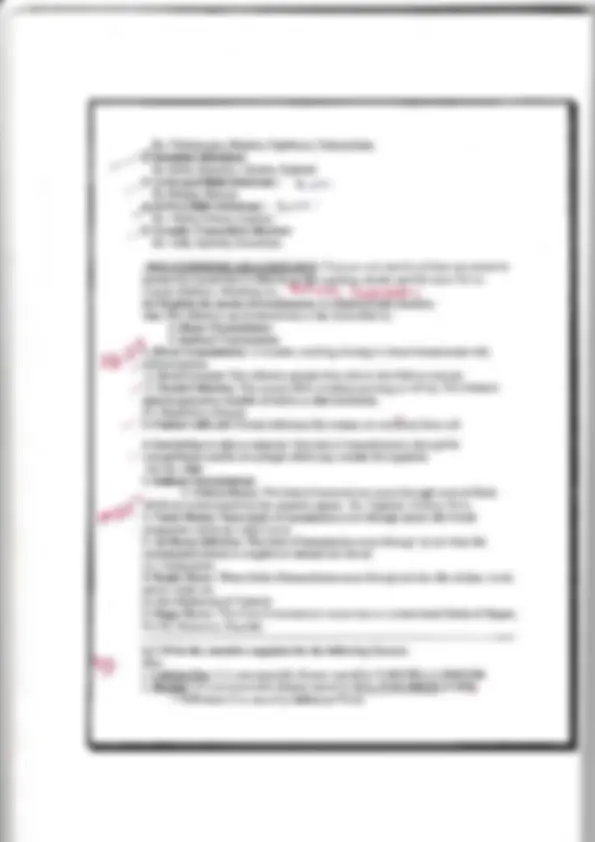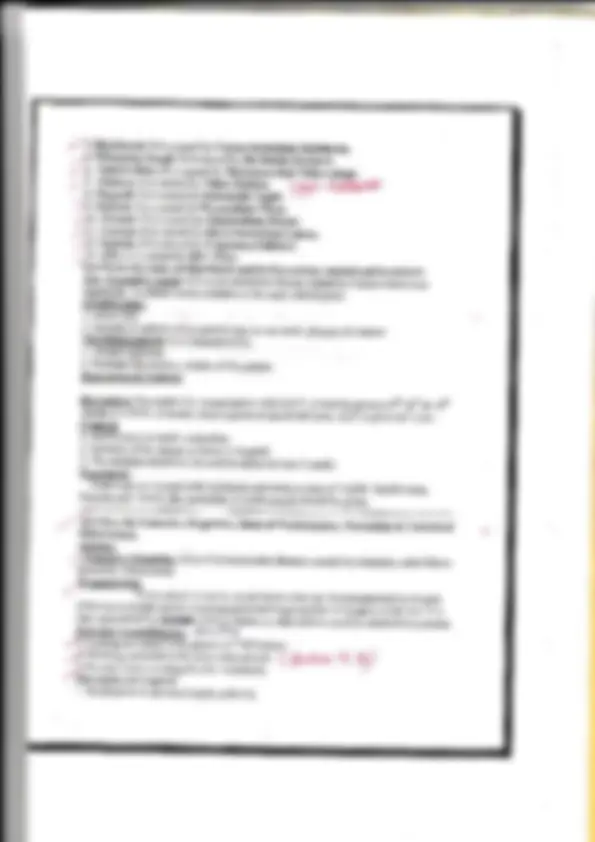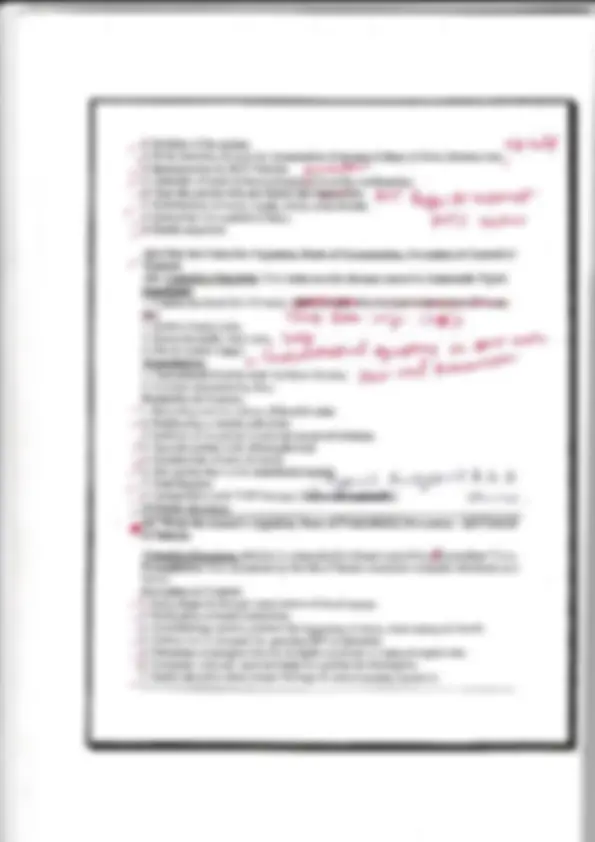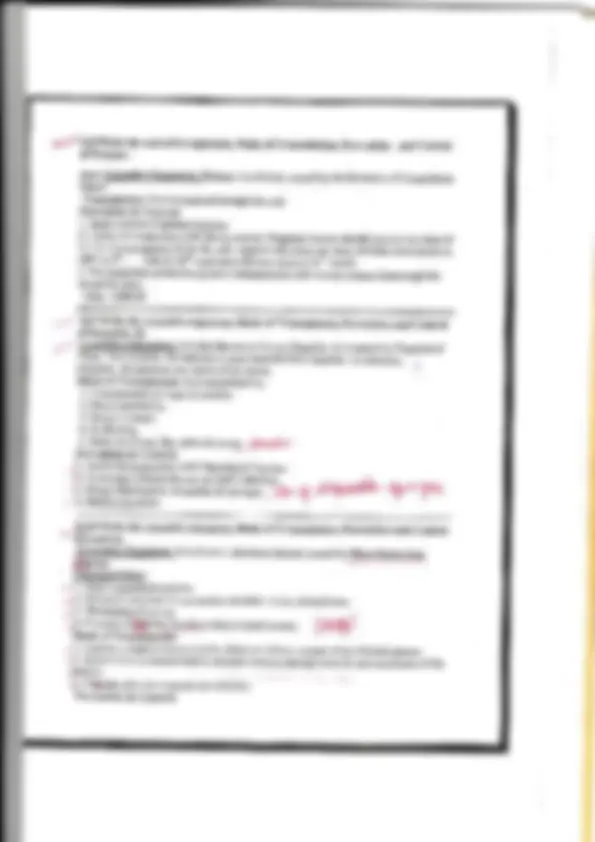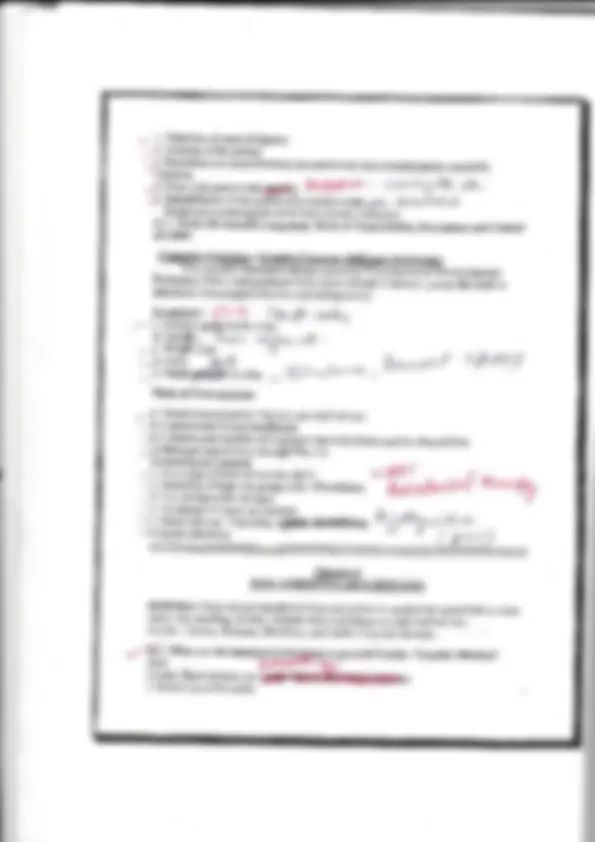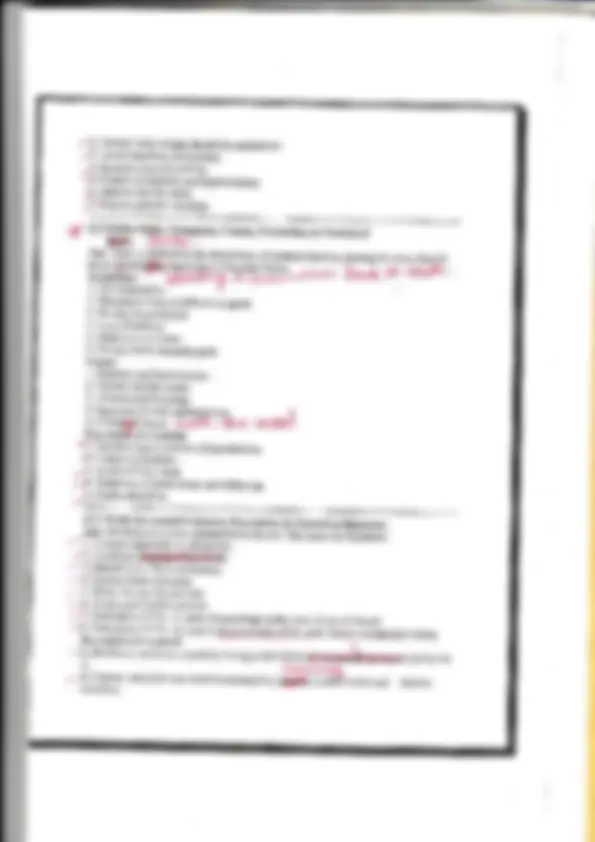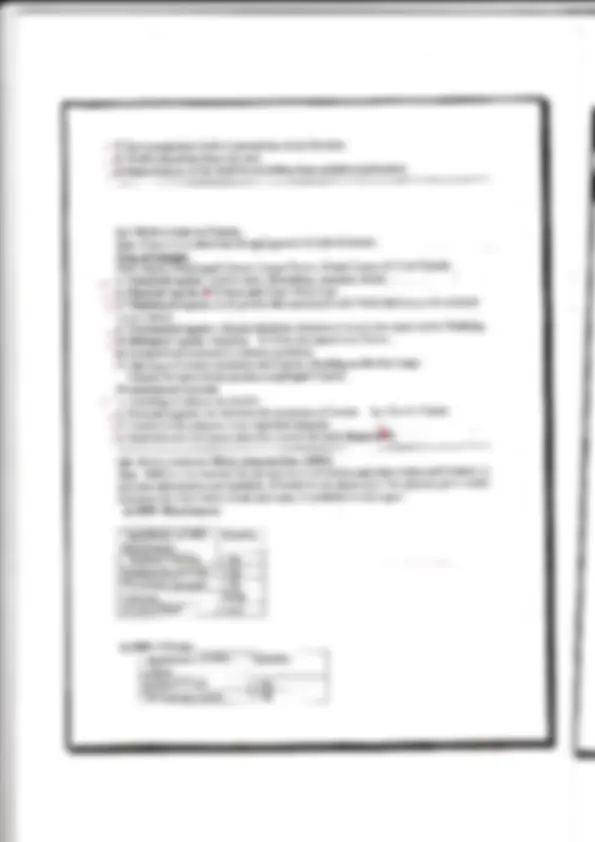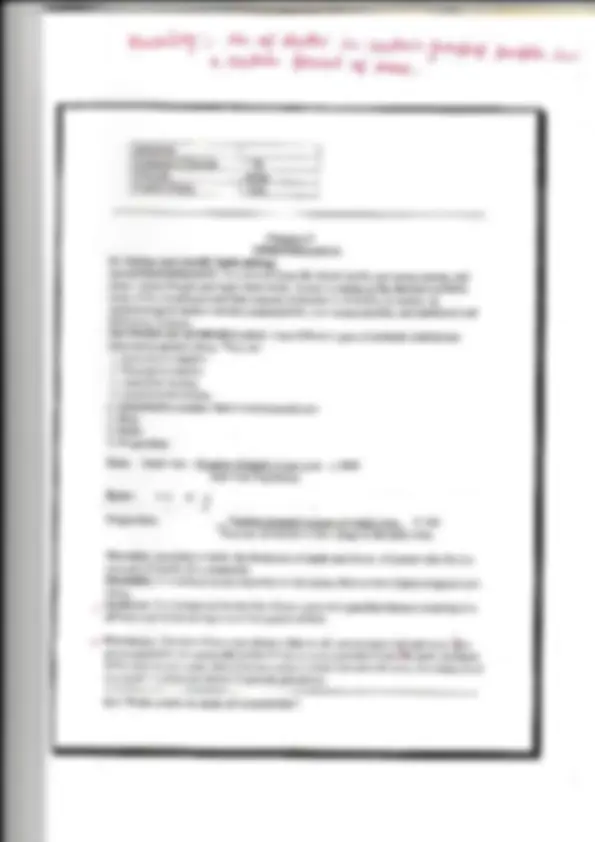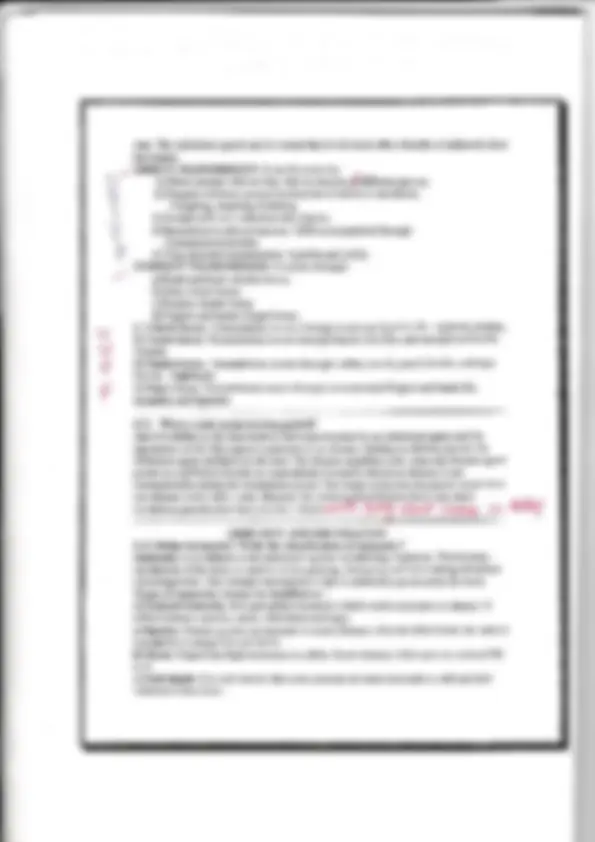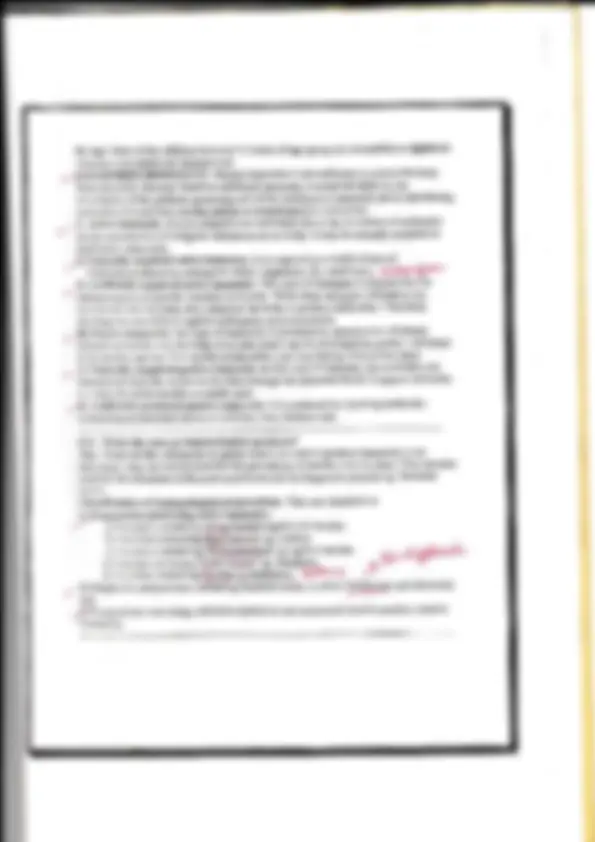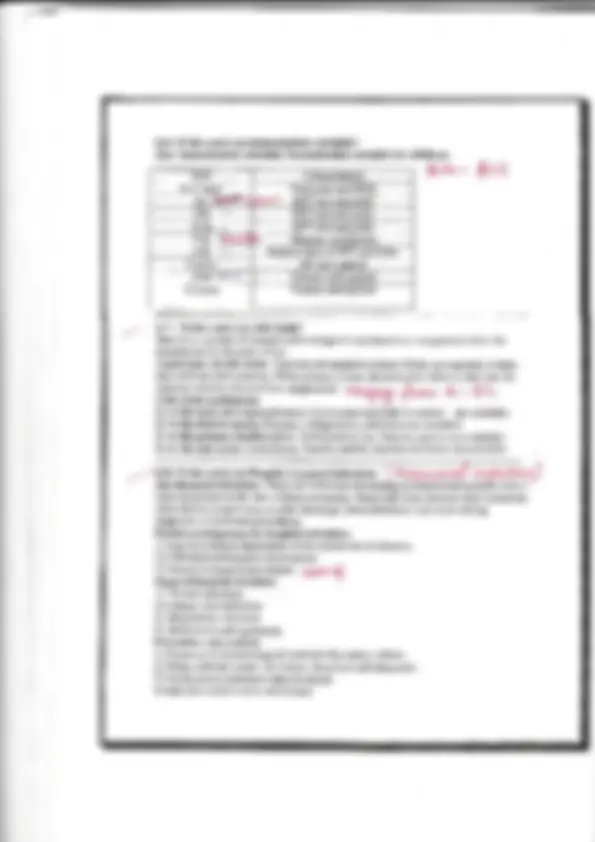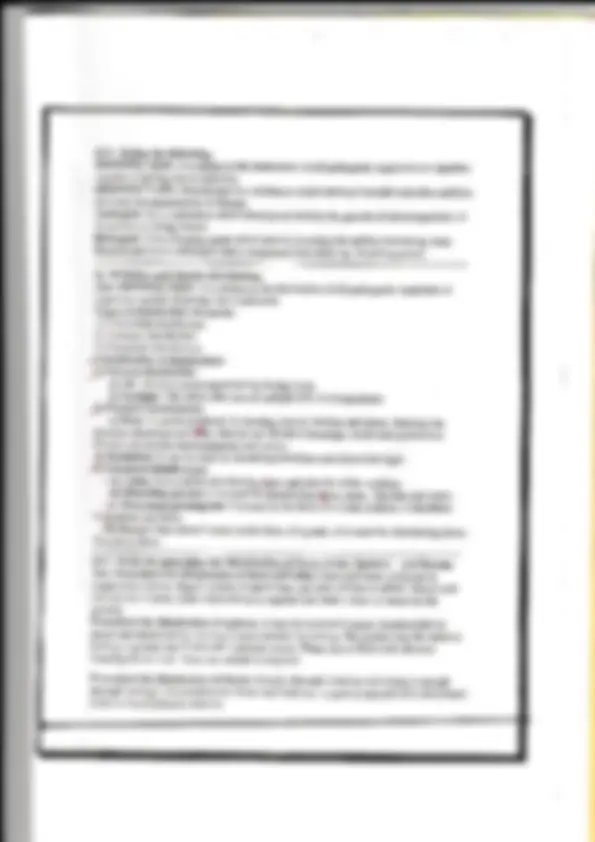Download Socal pharmacy notes and more Study notes Pharmacy in PDF only on Docsity!
HEALTH EDUCATION
AND COMMLINITY
PHARMtg;r,
,, I
:.
SYLLABU,S
- CONCEPT OF HEALTH
2.NUTRITION & HEALTH
3.DEMOGRAPIfY (^) & FAMILY PLANNING
4.FIRST AID
5.EN\IRONMENT & HEALTH
- FT]NDAMENTAL PRINCIPLES OF
MICROBIOLOGY
- COMMT]NICABLE DISEASES
- NON.COMMI]NICABLE DISEASES
9.EPIDEMIOLOGY
--c)
Nutrition- Good nutrition is essenfial for normal growth & also for resistance
against irfection.
-d) Occupation- EmDloment^ Drovides^ income^ so^ employed peoples
"-opy
good healtlL because tiey can afford me.dical
but
unemployed can:rot.
5-5ggl$-servigg- The aim of health & family welfare servic€s is to treat diseases,
prevent illness & promotion ofhealth. Health services like safe water supply &
immunization prevent^ a variety ofhealth diseases.
-Of-Write a^ note on^ lndicators of health. / (^) in"r compare the
health status ofotre community^ with other.
Charscteristlcs of lndicators
An ideal health indicator should be valid, reliable, sensitive & specific
Tvoes of indicators
The important indicators ofhealth are-
Mortaliff indicators Morbidif indicators
Disability rates
Nutritional status indicators
Eealth care delivery indicators
Environmental indicators
Social & mental health indicators
MuMs biNEsB
- utilizition rates
- Socio- economic indicators
Ans: The disease can be prevented^ at three levels-
1. Primarv nrevention- This action is taken before the onset ofdisease. This
inten'ention is taken at the prepathogenesis^ phase^ ofthe disease. The interventions are
health promotion & specific protection.
2, Secondarv Dreyention- It is the action taken at the early stage ofdisease to halt^ the
progress ofdisease & prevents complications. The modes of intewention are early
diagnosis & treatments.
3. Tertiarv prevention- It is the measure taken after the disease has advanced beyond
the early stages. The mode ofiuten'ention is disability limitation & rehabilitation. These
measures (^) minimize the (^) suffering & help the patient (^) to adjust with the derangement of health.
Q.4 How^ can the^ disease be^ prevented?
CHAPTER-
xurnr-ii6ffiEar,rn
Q I^ Define^ Nutrition.^ Classify food^ aDd its functioN.
!lg[!@- Nutrition^ is^ defined^ as^ the scieace^ of food & its relationship to health.
Nutrients are specific dietary constituetrts such as proteins, vitamins & minerals. Food
must contain adequate amounts ofal1 these nutrients in order to maintain health.
Functions of food
F It provides energy for mechanical work.
! It maintains growth, repair & reproduction.
! It provides resistance against infections & diseases.
> It maintains the functions ofbodv tissues.
Classification (^) of food t,sfw\e-
t l. Accordirg to source
)' Vegeiable food for ex- Rice, Wheat etc
) Animal foods for ex- Meat, egg, fish etc.
- According to functions
F Body builders for ex- meat, mil! fish etc.
F Bnergy yielders for ex- cereals, sugars etc.
! Protectives for ex- vegetables, fruits etc.
3, According to chemical nature
) Proteins
i lx,il*,". >^ [W
F Vitamins
) Minerals
Q.2 Deline Protein.^ List^ there^ functioL Name the types of amino acld.
Ans:_Protein is high moleculat weight polypeptides containing alpha amino acids joined
together by peptide linkage.
Function:
l. They provide structural ftame work for celli and tissues.
2. Maintence of osmatic pressure.
3. Synthesis ofantibodies, plasma proteins and hemoglobin.
- Proteins (^) can be catabolized to (^) release energy. ,1 5.^ Act^ as^ enzymes^ and^ hormon
Oor,,.ez
res'
f"'NLfl'o *
*Wry
TYPES OF AMINO ACIDS
l. Essential or Indispensabte (^) Amino acids: (^) These are those which (^) carmot be
syDthesized by the body. So they must be supplied in adequate amount through diet
.eg.valine, leucine, and methionine.
2. Non +ssential Amino Acids: These are those which can be synthesized by the body
and hence ofthe di
Requirement: 5000 I.U. dailv
Source: - Found in animal f;ts & fish liver oil & also produced on exposure
ofskin to
tM (^) rays ofsunlight.
Functions:
F (^) It is necessary (^) for bone & (^) teeth formation. ) (^) It is also necessary for normal growth.
(^) In the kidney (^) it ircreases (^) the reabsorption (^) ofphosphates.
gg!!glg!E!- (^) It produces (^) Rickets in children (^) & osteomalacia in adults.
RequirementF t000 I.U Dail".
VITAMINE
It belongs.to a gr_ oup of compounds called tocopherols. Alph
Beta, gamma^ and delta
tocopherols are known.
Functions
1. It is necessa5/ for reproduction and its deficiency leads to
sterility.
2, It is necessary for muscle metabolism
3. By an antioxidant effect, it protects vitamin A from deshuction.
- lt prevents (^) hemolysis (^) by protecting (^) unsaturated (^) fatty (^) acids oferythrocle membrane.
SoErqe: -^ Soya^ bean oil, wheat germ oil and rice genn oil.
Deficiencv: - Deficiency of vitamin E produces aiortion and
sterility in
animals.
VTTAMINK
The major forms of vitamin K are vitamin K; and K
Functions: - Vitamin K is necessary for the synthesis of cloning
factors esp€cially
{rothrombin. Its^ deficiency^ decreasls prot}rombin (^) cont"nt (^) oiil'*a.
#:
- (^) Vitamin (^) Kl is present (^) in liver, (^) spinach, green (^) leafl vegetables and cow,s (^) milk
Vitamin K2 is synthesized by intestinal baiteria. -
Fi$qy:
- (^) Increased bleeding due to defective (^) clotting mechanism. Requirement: (^) - 0.03mg per kg Daily.
WATER SOUBLE VITAMINS
rne water sotuble vrtamrns whtch_belong to the group of vitamin B complex
are
thiamine, riboflavin, nicotinic acid,_ pyriaoxine, p'antottrenlc aJJ
ionositof, Uiotin,
methionine, folic acid and cyanocobaiamin.
THIAMIIIE (Vitamin 81, (^) Aneurine) lggryq: Peas,^ beans, oatuneal, pea^ ruts,^ vegetables^ and^ ftuits.
Deficiencv: Deficiency of thiamine produces
1. Beriberi a symptom complex with characteristic neuropathy.
2. Wemicke's encephalopathy characterized by confusion, Ophthlmoplegia,
oystagmus, tremors, and mental retardation.
Requirement: 2mg. daily increases with intake ofmore carbohy&ates.
RIBOFLAVIN (Vitamin^ B2)
SEgg: Milk,^ eggs,^ liver, kidney,^ green^ leafr^ vegetables, meat and^ fish.
@gy: Deficiency^ of^ riboflavin^ produces angular^ stomatitis.^ It^ is^ prevalent^ in
malnourished children ald it is used as an index for malnutrition. Other deficiency
symptoms are:
I. Delayed wound healing 2. Irnpaired neuromotor function.
BglEggen!: 2 to 3 mg.^ daily.
NIACIN (Nicotinic^ Acid. Vitamin 83)
@: Liver,^ kidney,^ meat,^ poultry,^ fish,^ legumes^ and^ ground nut.
pgl!g!949y: Deficiency of niacin produces pellagra. This disease is characterized by three
D's diarrhea dermatitis and dementia- In addition, glossitis and stomatitis may also occur.
Pcllagra occurs in malnourished individuals who live on a diet containing maize or
jowar. Pellagra can be prevented by avoiding maize andjowar and by taking a mixed diet
containing milk and or meat.
BgggjqS!: The^ daily^ requirement^ of^ niacin^ is S&ng.
Deficiency: Deficiency ofvitamin C produces scurvy.'[he synptoms of scurvy are
weakness, fatigue, pain injoins.and muscles. Also there is bleeding of gums and
loosening ofteeth.
Requlrement: 40 to 60 mg. daily
06 Deline^ Mineral.^ Write its function and its classification.
..
Ans: Human body contains more than 50 chemical elements. These minerals are obtained
mainly through food I
